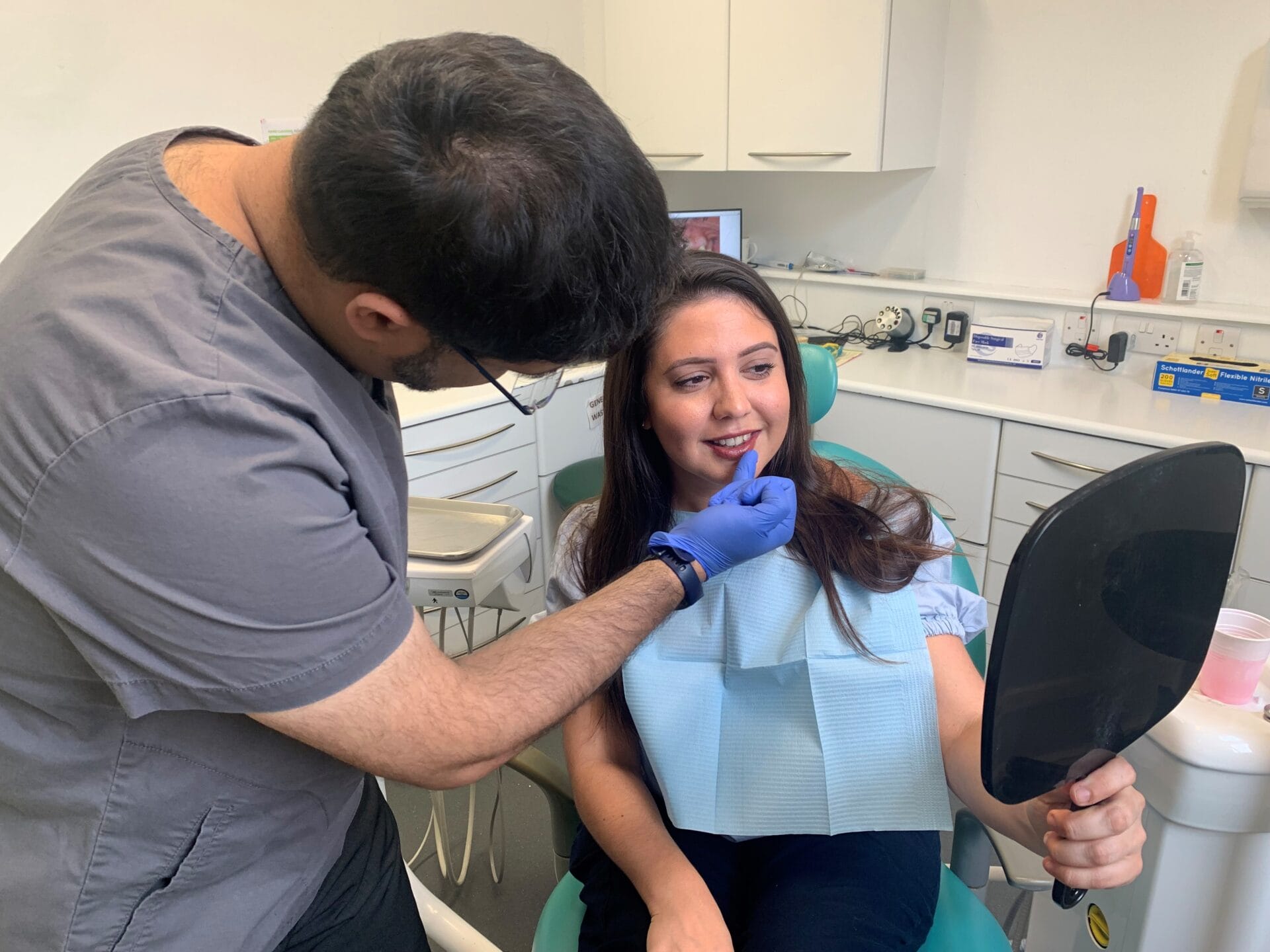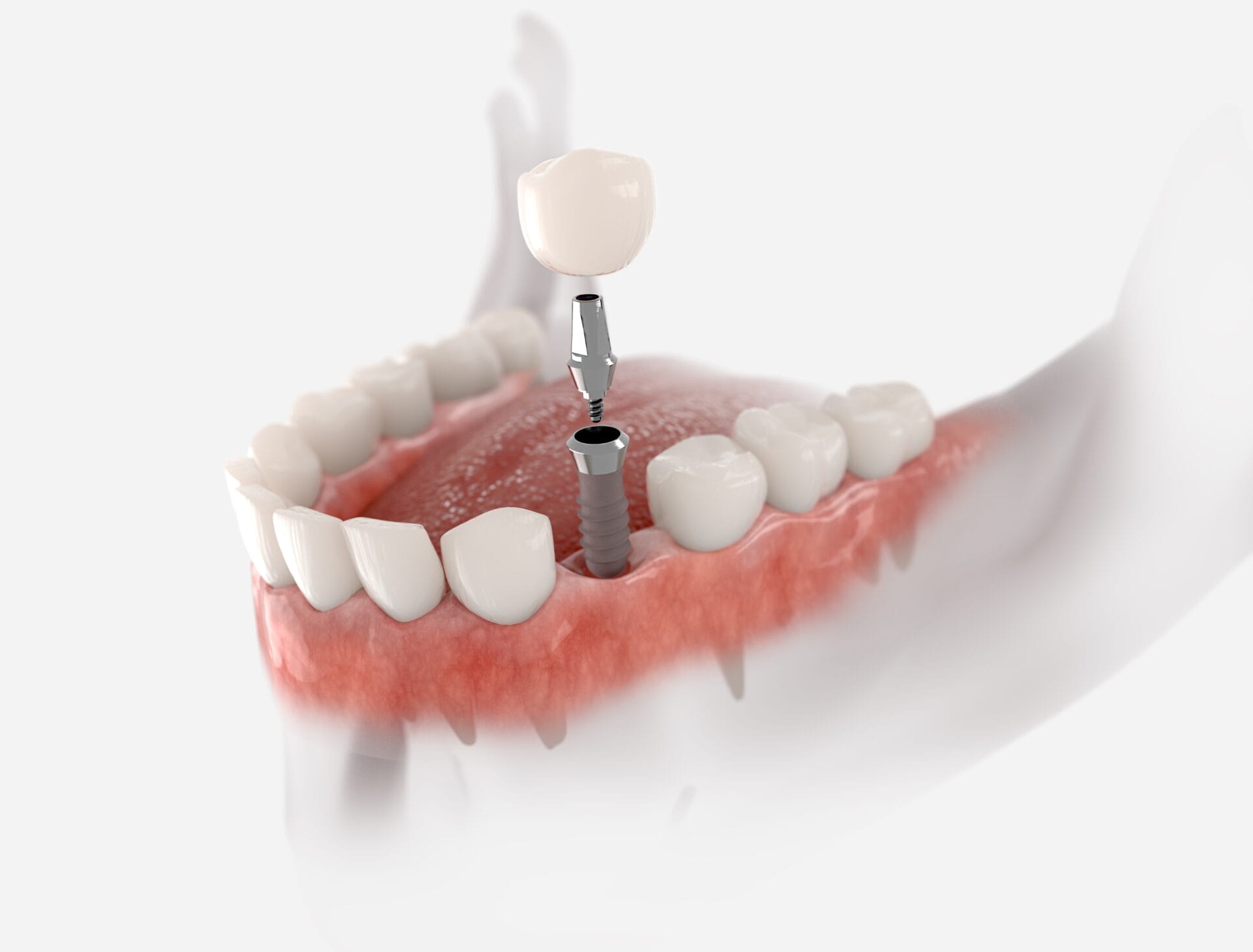Reconstruct Your Confidence with Dental Implants Kent: Experience You Can Trust Fund
Wiki Article
Experience the most recent Technologies in Oral Implants Technology
As the area of dental care proceeds to evolve, the developments in oral implant modern technology have actually been nothing short of impressive. The integration of modern technology is transforming the performance of dental implants, guaranteeing boosted results and patient complete satisfaction.Advanced Materials for Enhanced Resilience
In the realm of oral implants innovation, the combination of sophisticated products has dramatically added to improving toughness and long life of these important dental prosthetics. The use of products such as titanium alloys, zirconia, and ceramic substances has actually revolutionized the field by providing raised toughness, biocompatibility, and resistance to corrosion.
Titanium alloys are widely made use of in oral implants because of their outstanding strength-to-weight ratio, deterioration resistance, and compatibility with the body. These alloys make sure the stability and longevity of the implant by withstanding the forces exerted during speaking and eating, offering a reputable remedy for individuals looking for durable tooth replacements.
Zirconia, a sort of ceramic material, has actually obtained appeal for its biocompatibility and natural tooth-like look. Its high stamina and resistance to wear make it an appropriate option for dental crowns and bridges, improving the overall appearances and functionality of the dental implant.

Digital Imaging for Precise Positioning
The evolution of dental implants technology has actually further advanced with the assimilation of electronic imaging techniques, ensuring precise placement of these prosthetics for ideal practical and aesthetic end results. Digital imaging plays an essential duty in the preparation and positioning of oral implants by providing comprehensive 3D images of the individual's jawbone structure. This modern technology allows dental practitioners to examine bone density, find crucial frameworks, and prepare the exact placement and angle for implant positioning with unparalleled precision.By using digital imaging, dentists can create virtual surgical overviews that function as a roadmap throughout the dental implant placement treatment. These overviews are personalized for each and every patient, taking into consideration their one-of-a-kind makeup and the preferred outcome. This degree of accuracy not only enhances the success price of oral implant treatments but likewise decreases the danger of complications.
In addition, digital imaging makes it possible for dentists to picture the last prosthetic reconstruction prior to the real positioning of implants, allowing for precise preparation and ensuring that the end result meets the patient's aesthetic assumptions. Overall, the integration of electronic imaging technology has actually transformed the field of oral implants, offering individuals a much more foreseeable, reliable, and patient-specific therapy approach.

Minimally Invasive Surgical Methods


Developments in surgical techniques have actually caused the development of minimally invasive methods in the area of dental implantology. These methods intend to lower trauma to the patient, reduce recuperation times, and improve total treatment end results. Minimally intrusive procedures involve smaller sized lacerations, specialized instruments, and advanced imaging technologies to exactly position oral implants with minimal disruption to surrounding tissues.
One secret facet of minimally intrusive strategies is using directed surgery, where 3D imaging and computer-aided style software are employed to plan the implant placement with terrific precision. This enables a more predictable result and can often get rid of the demand for considerable flap surgical treatment.
Furthermore, innovations in materials and dental implant design have Your Domain Name actually additionally added to the success of minimally invasive methods. Implants with improved surface residential properties advertise much faster osseointegration, lowering the recovery time required prior to the prosthetic reconstruction can be put.
3D Printing for Personalized Solutions
Making use of 3D printing technology in oral implantology permits for the creation of very customized solutions customized to private person needs and anatomical variants. This advanced technology makes it possible for oral professionals to develop and fabricate oral implants with extraordinary precision and accuracy. By utilizing electronic imaging techniques, such as cone beam of light calculated tomography (CBCT), detailed 3D models of the client's dental cavity can be generated to guide the implant preparing procedure.One of the essential benefits of 3D printing in dental implantology is the capability to create patient-specific implants that perfectly fit the one-of-a-kind makeup of each individual. This customized approach helps boost the general success and longevity of the dental implant by making sure optimal fit and positioning. In addition, 3D printing permits for the production of intricate geometries and elaborate frameworks that would certainly be tough or difficult to accomplish utilizing conventional manufacturing techniques.
Additionally, 3D printing innovation enables dental experts to simplify the implantation process, lowering surgical procedure time and enhancing total patient experience. With its capability to develop personalized services rapidly and effectively, 3D printing is reinventing the field of oral implantology, offering patients innovative treatment choices see here and enhanced results.
Integrated Modern Technology for Improved Performance
Applying cutting-edge technology in oral implantology boosts performance and accuracy, elevating the criterion of care for people undergoing dental implant procedures. Integrated modern technology plays an essential function in improving the total success and toughness of dental implants.find here Furthermore, the assimilation of computer-aided design and computer-aided production (CAD/CAM) technology allows the production of custom-made dental implant remediations with outstanding precision. CAD/CAM systems make use of electronic impacts to make prosthetics that perfectly fit the patient's one-of-a-kind anatomy, making sure optimum comfort and capability. Furthermore, using robotic-assisted surgical procedure in dental implant positioning improves precision and lessens the risk of human error.
Verdict
In conclusion, the most recent advancements in oral implants innovation offer improved resilience through innovative materials, accurate positioning with electronic imaging, minimally invasive surgical methods, personalized remedies with 3D printing, and enhanced performance with incorporated innovation - Dental implants Kent. These developments in oral implants modern technology are transforming the field and giving people with even more reliable and efficient treatment choices for recovering their smiles and oral healthThe combination of modern technology is transforming the functionality of oral implants, assuring improved outcomes and patient satisfaction.
The advancement of oral implants innovation has further progressed with the assimilation of digital imaging methods, guaranteeing specific positioning of these prosthetics for optimal practical and visual outcomes. Minimally invasive surgical treatments entail smaller sized incisions, specialized tools, and progressed imaging technologies to precisely position oral implants with very little disruption to bordering tissues.
Implementing advanced modern technology in dental implantology improves capability and accuracy, raising the standard of treatment for clients going through dental implant treatments. Dental implants Kent. Integrated innovation plays a crucial function in improving the general success and sturdiness of oral implants
Report this wiki page